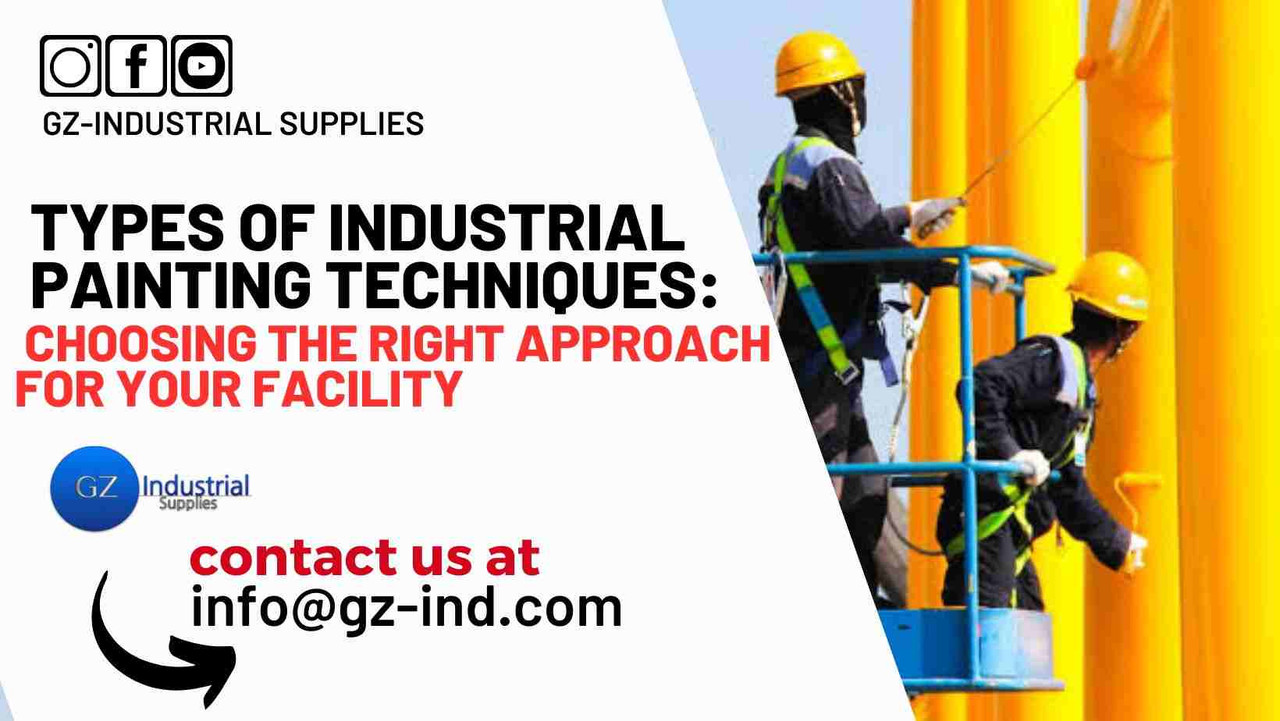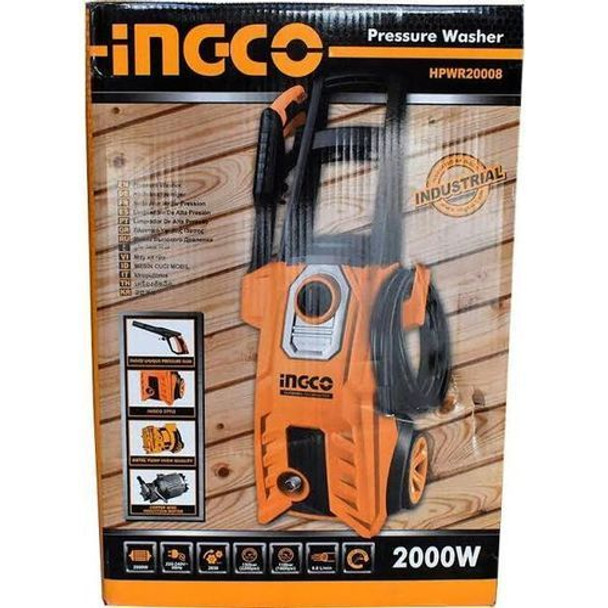Types of Industrial Painting Techniques: Choosing the Right Approach for Your Facility
Industrial painting is more than just an enhancement; it's a critical process that protects facilities against corrosion, wear, and environmental damage, while also fulfilling essential aesthetic and compliance requirements. The right painting technique not only extends the life of the infrastructure but also enhances operational efficiency and safety.
This guide explores various industrial painting techniques, offering insights into their applications, benefits, and how to select the appropriate method for your specific needs. Whether you're dealing with high-traffic areas that require durable finishes or environments that necessitate specialized coatings, understanding the different approaches to industrial painting will ensure that your facility not only looks its best but is also well-protected and compliant with industry standards.
Fundamentals of Industrial Painting
Industrial painting involves applying coatings that are formulated to provide protection and durability under extreme conditions. It serves multiple purposes, including corrosion resistance, chemical protection, and visual improvement of industrial facilities.
Selecting the right painting technique is vital to ensure optimal coverage, durability, and cost-effectiveness. The right method can significantly affect the longevity of the paint job and the overall maintenance costs of the facility.
Overview of Common Industrial Painting Techniques
Spray Painting:
- Process: Spray painting involves using a sprayer to evenly distribute paint over large surfaces quickly. This technique is known for its ability to provide a smooth, uniform coat.
- Ideal Use Cases: Best for large areas where speed is essential and a high-quality finish is required. Commonly used for exterior walls, tanks, and large machinery.
- Benefits: Fast application, even coverage, and suitability for various paint types.
Roller Painting:
- Outline: Roller painting applies paint using a roller brush, which is effective for covering large flat areas.
- Ideal Use Cases: Effective for interior walls, floors, and ceilings where precision is less critical than coverage.
- Benefits: Provides faster coverage than brush painting and is more cost-effective for medium-sized areas.
Brush Painting:
- Discuss: Involves using hand-held brushes to apply paint, offering meticulous control and precision.
- Ideal Use Cases: Perfect for detailed work, touch-ups, and smaller areas that require careful attention.
- Benefits: Allows for maximum control, ideal for achieving a high-quality finish on trim, corners, and welds.
 9 Pcs Paint Brush Set INGCO CHPTB0114091
9 Pcs Paint Brush Set INGCO CHPTB0114091
Advanced Industrial Painting Methods
1. Electrostatic Painting:
- Process: Electrostatic painting involves charging paint particles as they are sprayed onto a surface, causing them to attract electrostatically to the surface for a uniform, smooth finish.
- Ideal Use Cases: Particularly effective for metal surfaces such as fixtures, fences, and office furniture, where a durable, even coat is essential.
- Benefits: Creates a strong bond between the paint and the metal, resulting in a durable finish that is less prone to chipping and flaking.
2. Powder Coating:
- Process: Powder coating applies a dry powder using electrostatic methods, which is then cured under heat to form a solid layer.
- Ideal Use Cases: Used for products that require a tough, wear-resistant finish such as outdoor furniture, automotive parts, and heavy machinery.
- Benefits: Offers one of the most durable finishes available, resistant to scratching, fading, and chipping; environmentally friendly as it releases negligible volatile organic compounds (VOCs).
3. High-Volume Low-Pressure (HVLP) Spraying:
- Process: HVLP spraying uses a high volume of air at low pressure to atomize paint into a fine spray, reducing overspray and increasing application efficiency.
- Ideal Use Cases: Best for high precision work including automotive, marine, and aerospace applications where detailed finish and minimal waste are priorities.
- Benefits: Reduces paint waste, provides excellent control over spray, and results in a high-quality finish with minimal environmental impact.
 Waterproofing Coating Asmacoat WP 900 20liters
Waterproofing Coating Asmacoat WP 900 20liters
Specialty Coatings and Applications
Heat-Resistant Coatings:
- Discuss: Coatings designed to withstand extreme temperatures, protecting structures from heat-related damage.
- Ideal Use Cases: Applied to components like exhausts, engines, and boilers in industrial facilities where high temperatures are a norm.
- Benefits: Protects against thermal degradation, enhances equipment life, and ensures safety in high-heat environments.
Antimicrobial Coatings:
- Process: Involves applying coatings infused with antimicrobial agents that inhibit the growth of bacteria, mold, and mildew.
- Ideal Use Cases: Highly beneficial in healthcare settings, food and beverage processing plants, and anywhere hygiene is a critical concern.
- Benefits: Helps maintain sanitary conditions, reduces the risk of bacterial contamination, and prolongs the lifespan of the coated surfaces.
Epoxy Floor Coatings:
- Process: Epoxy coatings are applied to floors in layers, creating a hard, resilient surface.
- Ideal Use Cases: Commonly used in warehouses, garages, and industrial plants where floor durability and resistance to heavy traffic are required.
- Benefits: Provides a tough, long-lasting surface that resists stains, chemicals, and abrasions; also enhances safety by offering slip-resistant options.
 Epoxy Resin Epochem 105, 20kg keg
Epoxy Resin Epochem 105, 20kg keg
Choosing the Right Technique for Your Facility
Factors to Consider:
- Substrate Material: Understand the material composition of your facility's surfaces to choose a compatible painting technique that adheres well and offers long-term protection.
- Environmental Conditions: Consider factors like exposure to chemicals, weather conditions, and physical wear. Each environment demands specific properties from the paint such as UV resistance, corrosion inhibition, or chemical resilience.
- Regulatory Requirements: Ensure compliance with local and national regulations concerning volatile organic compounds (VOCs) emissions, worker safety, and environmental impact.
- Budget and Cost-effectiveness: Analyze the cost implications not just upfront but also long-term. While some techniques may seem expensive initially, their durability and lower maintenance needs can offer greater savings over time.
Best Practices in Industrial Painting
Preparation Steps:
- Surface Cleaning:
- Objective: Ensure the surface is free from contaminants that impede adhesion.
- Methods:
- Power Washing: Ideal for large exterior surfaces to remove dirt and debris.
- Abrasive Blasting: Effective for removing rust, old paint, and other stubborn residues, particularly on metal surfaces.
- Chemical Treatments: Used to neutralize oils, grease, and other chemical contaminants.
- Considerations: Choose a cleaning method that matches the type of contaminant and the surface material without damaging the substrate.
- Priming:
- Purpose: Enhance paint adhesion, increase paint durability, and provide an additional layer of protection against environmental factors.
- Selection:
- Metal Primers: Often contain rust inhibitors.
- Wood Primers: Designed to seal the wood and provide a smooth base.
- Application: Apply evenly and allow to dry fully before proceeding with painting. Follow manufacturer guidelines for drying times and recommended thickness.
- Masking:
- Goal: Protect areas that are not to be painted and achieve clean, sharp edges.
- Materials:
- Painter's Tape: Choose the right tape for the surface and conditions (e.g., for use on delicate surfaces or for sharp lines).
- Plastic Sheeting or Paper: Cover larger areas or fixtures to protect from overspray.
- Tips: Ensure the edges of the tape are well-sealed to prevent paint bleed. Remove the tape while the paint is still slightly tacky for the best results.
 Ingco High Pressure Washer 2000W
Ingco High Pressure Washer 2000W
Maintenance Tips:
- Regular Inspections:
- Frequency: Establish a routine inspection schedule, more frequently for exteriors exposed to harsh conditions.
- Focus Areas: Look for signs of wear such as cracking, chipping, and fading, which could indicate underlying issues.
- Touch-Up Protocols:
- Strategy: Implement a responsive approach to touch-ups, addressing issues as soon as they are detected.
- Process:
- Color Matching: Ensure touch-up paint matches the original as closely as possible.
- Surface Preparation: Clean and lightly sand the area to ensure good adhesion of the touch-up paint.
- Cleaning Techniques:
- Routine Cleaning: Use mild detergents and soft brushes or cloths to clean painted surfaces without damaging the paint.
- Special Considerations: For oily or industrial environments, use appropriate cleaning agents that can handle tougher grime without corroding the paint.
- Protective Measures:
- Sealants and Topcoats: Apply protective sealants or topcoats to enhance the durability of the paint, especially in high-traffic or exposed areas.
- UV Protection: For exterior surfaces, use paints and finishes that offer UV protection to prevent fading and degradation from sunlight.
Conclusion
The selection of the right industrial painting technique is a critical decision that can significantly impact the operational efficiency, aesthetic appeal, and longevity of a facility. Each method, from spray painting and electrostatic painting to powder coating and HVLP spraying, offers unique advantages tailored to different environmental conditions, substrate materials, and functional requirements. Facility managers must consider these variables carefully, alongside budget constraints and specific industry standards, to choose the most appropriate painting technique. By doing so, they not only safeguard their investment but also enhance the durability and performance of their infrastructure. For expert guidance and to ensure that your painting project meets the highest standards of quality and compliance, consider reaching out to professional painting services. They can provide the insights and execution needed to maximize the benefits of industrial painting for your facility.
Visit GZ Industrial Supplies for more information and assistance in selecting and applying the right painting techniques to safeguard and enhance your facility.












